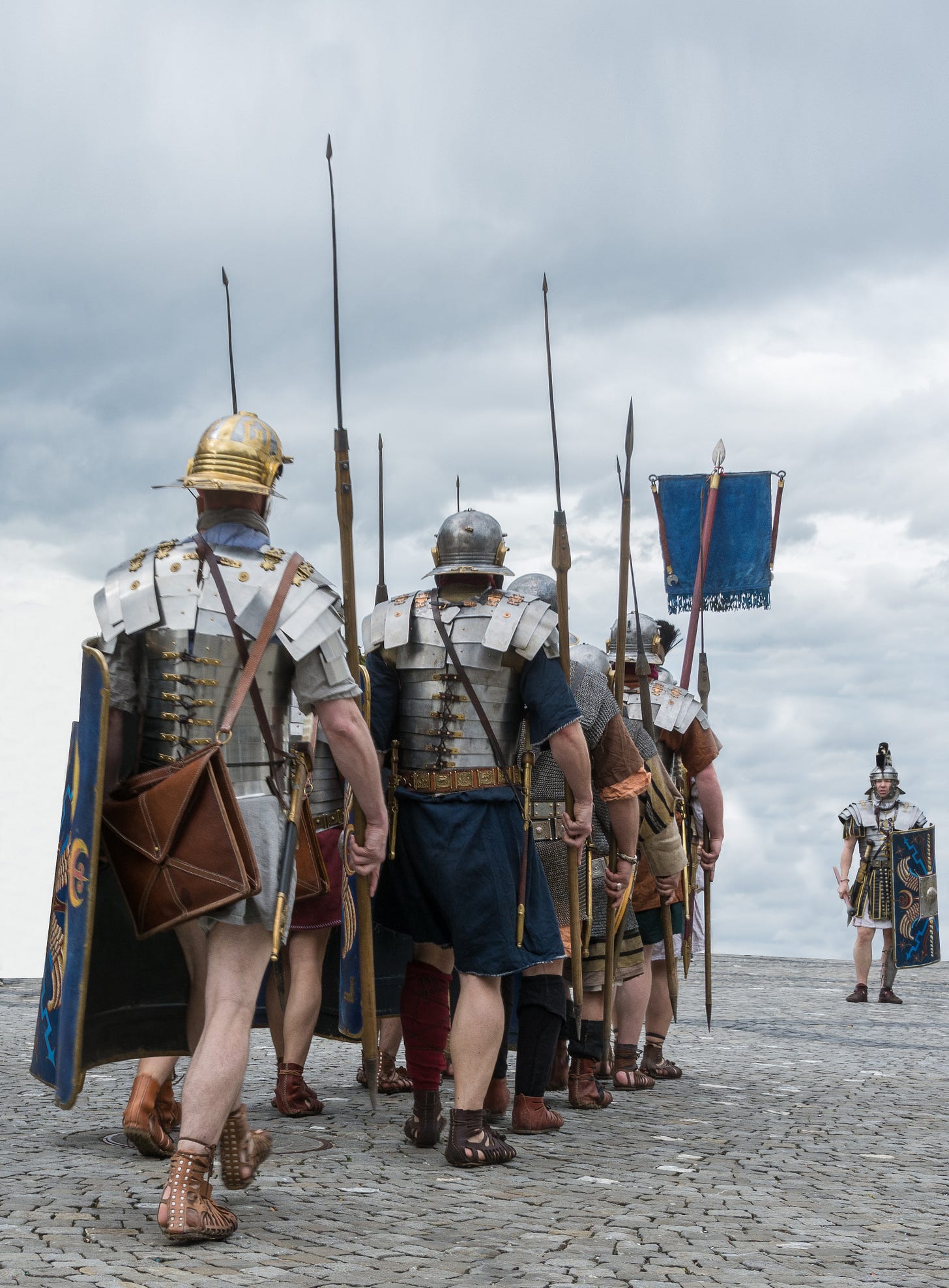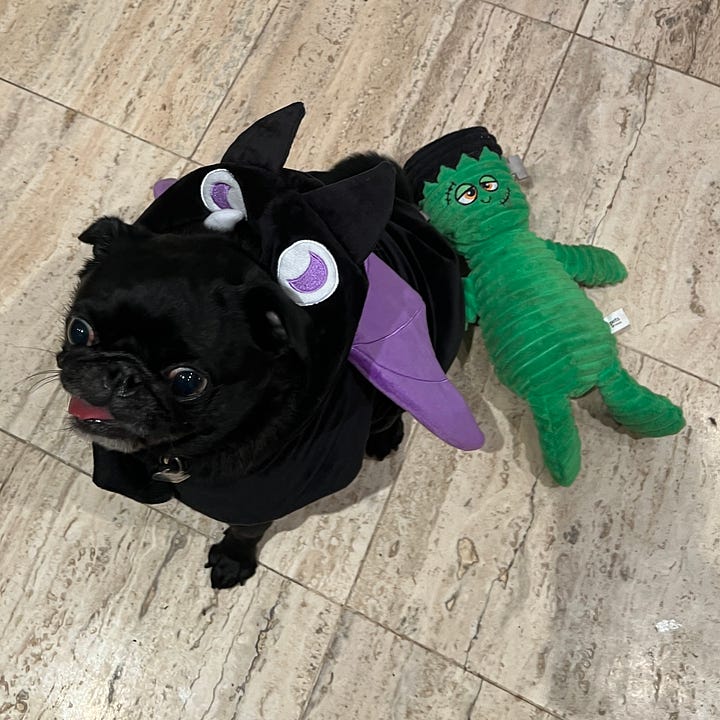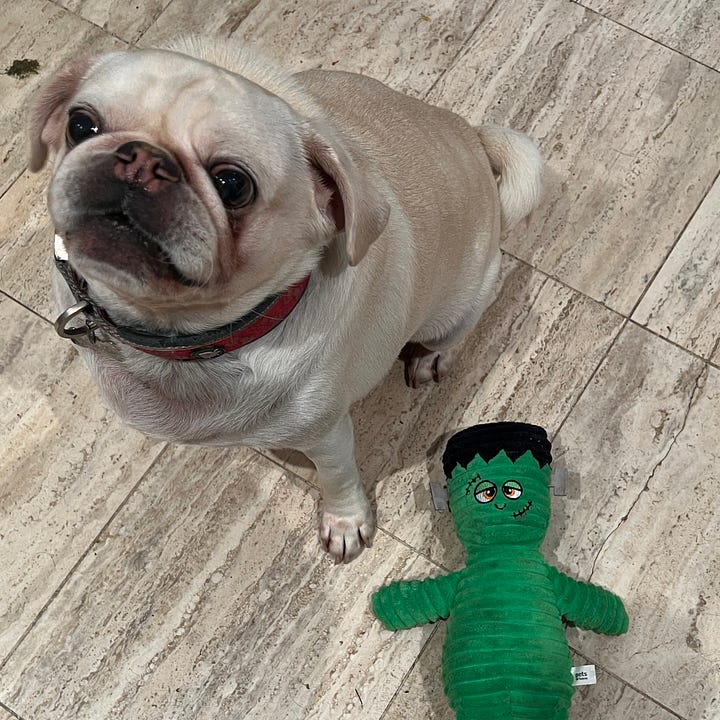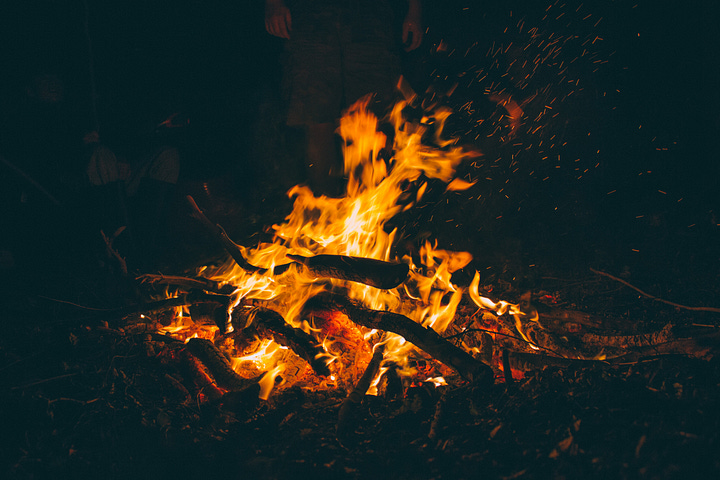Everywhere a Story: Tracing the Invisible Threads that Bind Us to Our Past
Next time you find yourself at a crossroads—literal or metaphorical—consider this: the decision to turn left or right could be guided by a road first mapped out by ancient feet. From the language we speak to the shortcuts we take, we're not just moving through the world; we're tracing the footsteps of those who came before us.
Far from isolated relics tucked away in museums or textbooks, history lives, breathes, and shapes our daily reality, woven into the very fabric of our lives—visible to those who know how to look.
Take the name of small town in North Yorkshire where I grew up: Thornaby. There are many place names in the area that end with the suffix '-by' (Danby, Faceby, Ingleby, Maltby and Ormesby) the ancient Dane word for farmstead. Around AD 800 Viking King Halfdene granted this land to his nobleman Thormod. So 'Thornaby' means 'Thormod's farmstead.
My Mam and Dad’s home sits on the site of what once was a Viking’s farm. Isn't that fascinating? I think so.
Still on the subject of etymology, in North Yorkshire, we call streams 'becks'. It wasn't until I started living elsewhere in the country that I realised that this was entirely a regional thing, and it piqued my interest. I discovered that 'beck' is from the Old Norse word 'bekkr'.
As a child, I was often to be found messing around and wading in the ancient woodland beck close to my house. The landscape around the beck has evolved over time and is gradually being swallowed by modern residential developments, but the sense of the enduring presence of this beck is intensified by the linguistic connection to the Old Norse folk who also visited this beck.
As a grown-up, I now live in Prestwich in North Manchester, just off the main road heading north out of the city centre towards the M60 motorway. This road was constructed on top of the Roman Road from the Roman towns of Mamucium (Manchester) to Bremetennacum (Ribchester). So I live 200 metres from a major Roman road, and every time I walk to the shops or stagger back from the pub, I take the same route that Roman soldiers and traders did nearly 2000 years ago.
As someone who researches Roman archaeology, this never stops being impressive, even if my kids roll their eyes every time I mention it.

It makes me wish I believed in ghosts and could accost them along this road to chat: "How's marching on these cobbles in full armour, then? I can barely make it home from The Red Lion." "How much for an amphora of your finest wine? Tesco is doing 20% off six or more bottles of wine until Sunday."
Every time I drive to the University of York, I pass, as thousands of other commuters do daily, my favourite ghost sign. A ghost sign is an old-fashioned advertising sign on a business premises that has long ceased trading, a small section of the building that resists change and remains frozen in the past. This sign reads: "Nightly Bile Beans Keep You Healthy, Bright-Eyed & Slim.
Such bold claims demanded further attention, and a quick Google search uncovers a wild tale of audacity centred on two hustlers: Charles Fulford and Ernest Gilbert, who invented a fake scientist and a "miracle" bean that supposedly came from the Australian wilderness. They launched an advertising blitz in late 19th-century Leeds, promising these Bile Beans would do everything from burning fat to purifying blood. Even after a court called them out for fraud, these two seemed Teflon-coated and gullible customers consumed Bile Beans until the 1980s.
Cultural traditions and events are also an entryway to the past. In the UK over the next few weeks, we have Halloween and Bonfire Night coming up (and Mischief Night if you live in certain parts of the country).
Our current Halloween in the UK looks very similar to that of the US, with elaborate yet mass-produced cheap costumes, parties, pumpkins, decorations and trick-or-treating door-to-door for sweets and chocolate. However, I recently explained to my kids that 'childhood me' in the 1980s had to make do with a rock-hard, impossible-to-carve turnip on a string, a large black trash bag for a witch's dress with a homemade cardboard hat, and we went 'Halloweening' for pennies, not sweets. We didn't even say trick or treat, instead having to recite this rhyme tediously at every house:
The sky is blue
The grass is green
Have you got a penny for Halloween
If you haven't got a penny
A ha'penny will do
If you haven't got a ha'penny
Then god bless you
Of course, Halloween goes much further back. The word 'halloween' comes from the Christian celebration of All Hallows Eve, but like with many Christian celebrations and festivals, its origins can be traced back to the pagans, in this case, the Gaelic festival Samhain to mark the end of the harvest season and start of winter. It was believed to be a time when the veil between the living and spirit worlds was thin. Traditions included lighting communal bonfires, feasting, dressing in costumes, and practising divination.
Discussing Halloween's 'back story' with my 'bairns' - the archaic word for children that is still used in north-east England and Scotland - is a great way to explore a vast expanse of people throughout our history, from the Neolithic to ourselves in the present day, visiting a pet supply superstore to buy bat costumes and Frankenstein toys for our dogs.


A week later, on the evening of the 5th November, we will be keeping those dogs inside and our TVs on loud to mask the sounds of fireworks erupting to serve as an annual reminder of the failed 1605 Gunpowder Plot and the fate of its originator, Guy Fawkes.


Despite giving the freezing cold, muddy fields and crowds a swerve at the fireworks display in favour of a cosy sofa, we will continue the culinary customs of our forebears on Bonfire night by feasting on toffee apples, parkin cake and jacket spuds because, as we often say when recreating the rituals of those who came before us: "It's tradition, innit?"
As I stand in line at the supermarket, pondering the global journey of the produce in my basket, or as I drive through streets named after long-forgotten figures, I'm reminded that our lives are just one layer in the palimpsest that is our world. The echoes of history—be they in the form of Roman roads, Viking etymology, or even audacious advertising from a bygone era—are not just nostalgic tales. They serve as landmarks in our collective memory, signposts pointing to the myriad ways our past has shaped our present.
Why does this matter? Because the stories and remnants of yesterday aren't locked away in dusty museums or fragile pages of ancient books; they are in the air we breathe, the words we speak, and the paths we tread. Understanding this makes our everyday lives a constant exploration, and it provides context to the choices and traditions we hold dear.
But it's not just about looking back; it's about moving forward. Recognising that we walk alongside history every day makes us part of a continuum, linking us to the past while pointing toward the future. It provides a roadmap of where we've been, which is indispensable for choosing where we're going.
The next time you find yourself at a crossroads, remember that you're not the first to ponder the turn of destiny at that very spot. Your decision joins countless others, spanning across time, and adds another layer to this ever-evolving tapestry we call life. And who knows? The choices you make and actions you take today might just be the 'echo' someone hears tomorrow.



